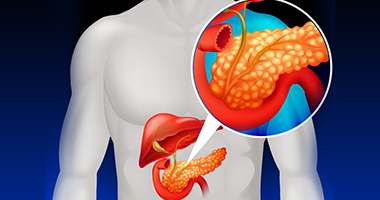Intraductal Papillary Mucinous Neoplasm
IPMN is a disease that affects the pancreas by growing abnormal tissues which produce mucus and can lead to the formation of pancreatic cyst which can lead to cancer and the inflammation of the duct. Read More
Top Doctors For Intraductal Papillary Mucinous Neoplasm Treatments
Top Hospitals For Intraductal Papillary Mucinous Neoplasm Treatments
Intraductal Papillary Mucinous Neoplasm
The word “mucinous” is used when describing abnormal cells producing thick mucus. Intraductal Papillary Mucinous Neoplasm (IPMN) involves the growth of abnormal new tissues of the pancreas that grow within the pancreatic duct and produce mucins; they can become very big with time. The abnormal cells may be long and secrete thick mucus, blocking the pancreatic duct. IPMN usually starts from small growth to invasive cancers if left untreated. This progression may take 5-6 years.
The pancreas is a sensitive organ in the abdomen found behind the stomach. It is characterized by the main duct containing many branches. This duct is linked to the first part of the small intestine (duodenum) where the digestive enzyme. The digestive enzymes produced in the pancreas travel through the branches, into the main duct, and then into the duodenum.

Researchers at Johns Hopkins did a study to find out how many people had IPMN that were not causing any symptoms. They looked at the computerized tomography (CT) scans of 2,832 patients which included the pancreas. What they discovered was that even though none of the patients had any pancreatic symptoms, 2.6 percent of them had a pancreatic cyst. This research also showed that pancreatic cysts are more common as we age. In the Johns Hopkins study, no patients under the age of 40 years had a cyst and the percentage of cysts in the 80 to 89-year-old age group jumped to 8.7 percent.
Source: www.verywellhealth.com
Pancreatic cyst
Pancreatic cysts involve saclike pockets of fluid-like structures on the pancreas. It can be diagnosed using imaging testing. Pancreatic cysts are divided into two:
- nonneoplastic
- neoplastic cysts.
They may contain subtypes of cysts, such as pseudocysts, serous cystadenomas, and mucinous cystic neoplasms. Some pancreatic cysts may be cancerous while some may not. It is caused mostly to be pancreatitis.
What is Pancreatitis?
This involves inflammation in the pancreas, hence affecting its function. The enzymes produced by the pancreas could attack the pancreas itself. This could be acute or chronic. Pancreatitis can occur due to excessive alcohol use, gallstone disease, or due to some genetically inherited predispositions.
Types of Intraductal Papillary Mucinous Neoplasm IPMN
The types of IPMN is classified based on:
The presence or absence of invasive cancer which includes:
- Low-grade dysplasia,
- Moderate dysplasia, and
- High-grade dysplasia
Location of the neoplasm in the pancreas which could be in:
- The main duct
- The branches off the main duct, or
- Both places (mixed)
How is Intraductal Papillary Mucinous Neoplasm IPMN diagnosed?
When consulting with a doctor for diagnoses, you will be asked certain questions to ascertain the degree of your symptoms. You will be examined and your medical history traced.
IPMN symptoms are similar to other pancreatic, bowel, or intestinal diseases, so the first-hand examination cannot spell out if you have IPMN. To get a clear diagnostics, you will be taken to do certain scans such as:
- Computed tomography scan,
- Magnetic imaging techniques,
- Endoscopic scan, etc
These scans get images at different angles to obtain cross-sectional images to show the dilatation of the pancreatic duct.
Also, fluid markers like carcinoembryonic antigen (CEA) could be used to help with the diagnosis as well.
Risk Factors
Risk factors of the IPMN are as follows:
- Chronic Pancreatitis
- Medical history of pancreatic ductal adenocarcinoma in the family
- People who smoke
- People with diabetes
- Age
- Obesity
Causes
The causes of IPMN are still uncertain, but there are risk factors that are believed to contribute to triggering IPMN.
Symptoms
Symptoms of IPMN may include:
- Abdominal pains
- Nausea and vomiting
- Jaundice; yellowing of the skin and eyes caused by obstruction of the bile duct
- Acute Pancreatitis
- Weight loss
- Lightly-colored stools
Treatment and Management of IPMN
Treatment methods of IPMN are dependent on the stage of the abnormal cell growth in the pancreatic duct. Such treatments include:
Whipple Procedure
In this procedure, the head of the pancreas is removed. In severe cases, the duodenum, part of the bile duct, the gallbladder, and part of the stomach are also removed
Distal Pancreatectomy
This involves the removal of the tail of the pancreas which is the part of the pancreas that is close to the spleen. Here the production of the hormone is not disrupted.
Central Pancreatectomy
Here, the middle of the pancreas is resected with the head and the tail of the pancreas intact
Total Pancreatectomy
This procedure involves the removal of the whole pancreas
Surgical Resection
This is needed for noninvasive IPMN because a large percentage of people with IPMN will develop cancer.IPMNs found within the ductal branches of the pancreas might be more difficult to treat and, instead of surgery, imaging scans are often employed to monitor signs of growth.
Prevention
Since the cause has not yet been identified, it is quite difficult to give some prevention measures although certain steps can be taken to avoid or reduce the risk factor. It includes
- Having a healthy lifestyle such as eating diets rich in fruits and vegetables
- Exercise regularly
- Increase your vitamin D intake
- Avoid smoking and alcohol.
Survivability and Recovery Rate
IPMN has a high recovery and survivability rate. Most people recover well from treatment. Although if a more invasive neoplasm is found, there could be a need for another surgery. Research has shown how to manage and treat them, and also with the improvement of surgical techniques recovery rate has greatly improved. Research has shown that the percentage survival rate that’s been reported with a percentage of 95% and 100%.
FAQ
1. How do I know I have a Pancreatic cyst?
Most cases of the pancreatic cyst are discovered until a computed tomography scan or any other abdominal scan is done for other medical conditions as It is possible for symptoms not to appear and the pancreatic cyst not discovered. However, there may be pains accompanying pancreatic cysts that are large.
2. Do pancreatic cysts become cancerous?
It is possible for the pancreatic cyst to become cancerous. Although not all pancreatic cyst is precancerous.
3. What happens when the pancreatic duct is blocked?
When the pancreatic duct is blocked, digestive juice from the pancreas which contains bicarbonate and enzymes that aids in the digestion of food is stopped hence affecting the digestion process.
4. How fast does IPMN grow?
The rate benign IPMN grows is slower than malignant IPMN with a record of 0.8mm per year and 18.6mm per year respectively.
5. Should IPMN be removed?
It is recommended to be removed if there are high probabilities of it growing into cancer. Surgery is suggested to remove part of the pancreas, sometimes all of it, as it’s the only curative procedure.
6. What Is Dysplasia?
Dysplasia is used to describe an abnormal state in a cell, which implies that means that the cell is pre-cancerous.


























































































